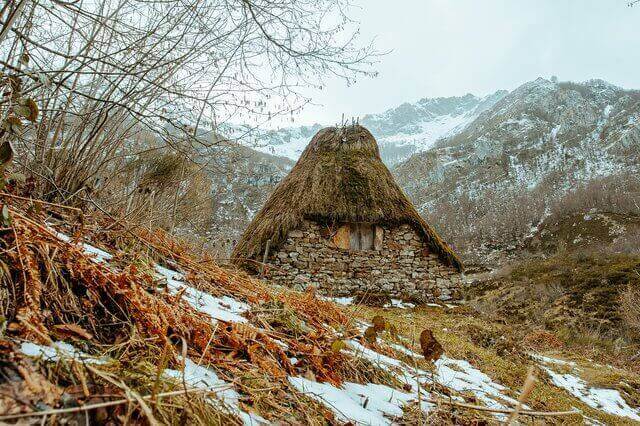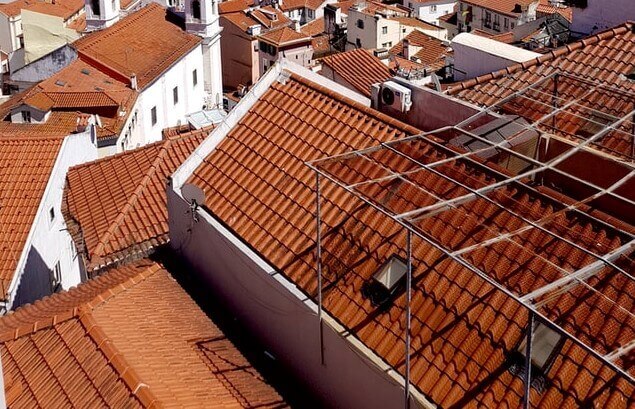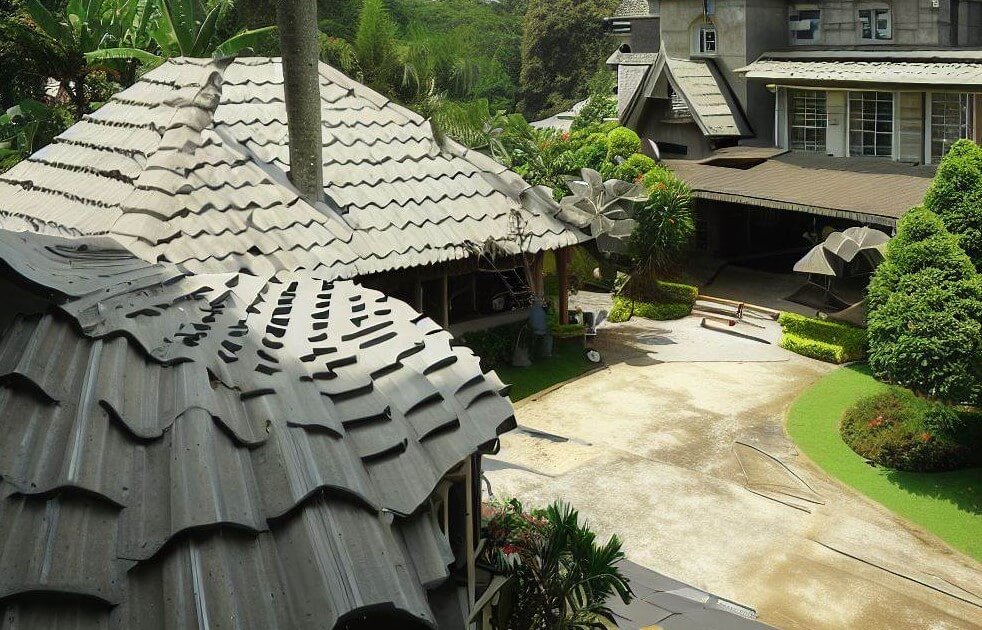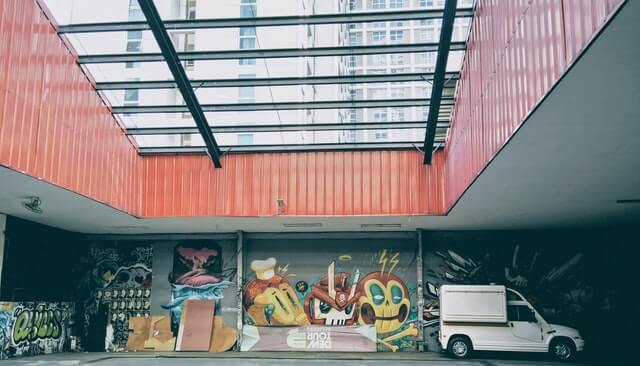Different Types of Roof Covering Materials
Roof covering is necessary to protect the house from the adverse effects of the environment. Several types of materials are used to cover a roof. In this article, we are going to discuss 10 types of roof covering materials.
1. Thatch
It is one of the cheapest types of roof covering materials. The construction process of the thatch roof covering is very simple. Usually, the thatch is used in rural areas for the construction of very low-cost houses.

The framework for supporting the thatch consists of round bamboo rafters spaced 300 mm apart. Then, split bamboos are placed over the rafters and bind them together. The split bamboos are always laid at a right angle. The rafters may be made of wooden bullies. Thatch is lastly tight secured to this framework with the help of wires or ropes.
Thatch may be used directly over the framework in form of bundles, each bundle being laid lapped sideways over the other.
For proper resistance against penetration of rainwater, the thatch covering should be at least 150 mm thick. It should have a slope of at least 45 for the proper flow down of rainwater.
These types of roof covering materials are very combustible, therefore some fire-resisting solution may be applied after it has been laid over the roof. Read Also: Advantages and Disadvantages of Flat Roof over Pitched Roof.
Advantages
The following are the advantages of thatch roof covering:
1. It is very light in weight.
2. The construction process is very simple.
3. Low cost of construction.
3. No need to hire skilled labor.
Disadvantages
Following are the disadvantages of thatch roof covering
1. It is combustible.
2. Absorbed moisture rapidly.
3. Easily decayed.
4. It is unstable against high winds.
2. Tiles
Tiles have been used as a roof covering material since ancient times. They are available in a variety of shapes, sizes, and specifications. The tiles are named according to their shapes and sizes and the region in which they are manufactured. According to their shapes, they are classified as follows:

A. Plain Tiles
Plain tiles also known as flat tiles are manufactured in rectangular shaps. They are generally 250 × 150 mm to 280 × 180 mm in size, and the thickness of these types of tiles are varying from 9 mm to 15 mm.
B. Curved Pan Tiles
Curved pan tiles are another types of tile that are used as a roof covering material. They are stronger, more durable, and heavier than pot tiles. But, they are less curved than pot tiles. At first, they are moulded as a flat shape and the required curvature is given. Usually, The size of these types of tiles is around 30 to 35 cm long and around 20 to 25 cm wide.
Before laying tiles as a roof covering materials, It is necessary to do a certain amount of groundwork. For this, the groundwork is prepared by fixing batten to the common rafters. Rafters are typically spaced 25 cm to 35 cm apart. Read Also: Tiles Flooring.
3. Solar Roof tiles or Solar Shingles
Solar tiles, also known as solar shingles are not only used as a roofing material but also generate electricity. Solar roof tiles or solar shingles are photovoltaic modules, it produces electricity by capturing sunlight. These tiles are commercially available in the market. The price of these tiles is around 3$ to 9$ per watt. Obviously, this price depends on the manufacturing company, specification, installation, and also region where is to be installed.
4. Wood Shingles
Wood shingles are nothing but a thin timber board around 1 cm thick. They are generally rectangular in shape. The length and breadth of this board are varying from 30 to 40 cm and 6.5 cm to 25 cm respectively. Shingles are not common materials for roof covering as they are liable to decay or crack under the atmospheric effects. This type of roof covering material is mostly used in place of tiles or slats where it is available in a wide range.

5. Asbestos Cement Sheets
Asbestos cement sheets are another type of roof covering material and are widely used for sloped roofs. It consists of a mixture of cement and powdered asbestos. This mixture is finally converted into a thin sheet or tiles and it is well known as asbestos cement sheets or A. C sheets. Asbestos cement sheet has several advantages such as – being light in weight, durable, fire-resistant, etc. It is cheap and impervious, and not liable to decay or eaten away by insects. There are mainly two types of A.C. sheets that are available in the market. One is the ‘Big six type’ and the other is ‘Trafford’. These sheets are available in different lengths varying from 1.5 to 3 m.

6. Glass Covering
It is not commonly used as a roof covering material. It is mostly used in industrial buildings, factories, etc. to enter more light into the building through the roof. It is very expensive. It can break and can create a hazardous situation during work. Excellent and knowledgeable labours are required to install such types of roofs. Glass covering may be damaged due to vibration of industrial machine. The glass covering has more disadvantages compared to advantages, for this reason, it is not used these days as a roof covering material.

7. Tar or Bituminous Felts
Tar or bituminous felt by itself is not a roof covering material. It acts as a membrane and is laid over a sub-structure. It is durable and impervious material. It is very helpful for leak-proof roof construction. They are flexible and can be adapted to any substructure.
The bituminous felts are not liable to crack or disintegrate. But, they are not good in appearance, and they do not provide a self-supporting structure. hence felts always need a substructure before they could be laid. Read Also: Method of Waterproofing of Flat Roofs